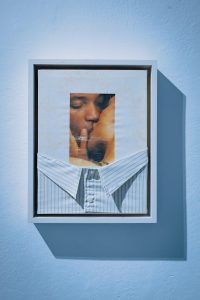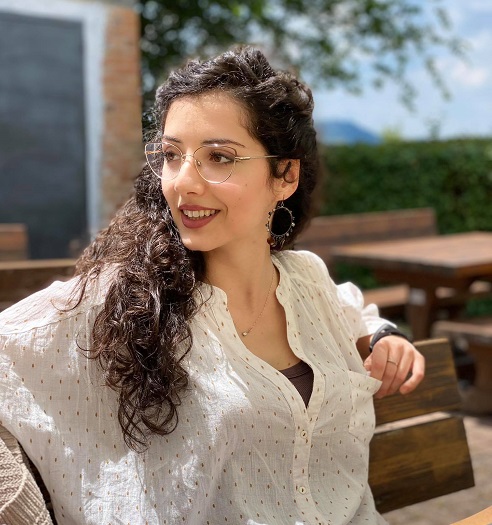At Parsec in Bologna, until February 20, 2022 it is possible to visit the exhibition “It ends with Nostalgia”. The exhibition is named after a quote from the text “The future of Nostalgia” by writer and artist Svetlana Boym, who writes “Our century seems to have begun with utopia and ended with nostalgia”.
At the base of the exhibition project there is a reflection that revolves around this ancient feeling; the term nostalgia, in fact, was coined in the medical field in 1688 to indicate the disease that comes from the yearning to return to the homeland. From the Greek nóstos ‘return’ and algia ‘pain’, therefore, this feeling arises as a lack mostly referred to a now distant place, and then develops as a transgenerational evil also linked to a past time – which is looked upon with regret – or to people who have inhabited this time. However, a reference to the future is not lacking: the two temporal axes coexist in this emotion, which is also manifested in the face of the prediction of a utopian future unable to bear comparison with the past.
The works of the artists Guendalina Cerruti – Milanese who lives and works in London – and Sathyan Rizzo – based in Bologna – share the rooms of the young space with a work by Francesco Hayez, head of Romanticism. Of the latter is exhibited Study for “Refugees of Parga” (1826-1831), a work in which the artist represents the inhabitants of the city forced to abandon their land due to the Turkish occupation. The study focuses on the face of one of the figures, who in the final work is intent on collecting a handful of sand from his land to take with him. The woman’s melancholy gaze captures us and makes us partakers of that pain, emphasized by the background notes of Watering a flower by Haruomi Hosono.
The decidedly enveloping piece is the protagonist of the book on display: Raising moths. Attemps at (Musical) Ekphrasis On Haruomi Hosono’s Watering a Flower (2019) in which the two authors, Federico Antonini and Sergio Savini, collect all the comments posted by YouTube users on the piece.
The impressions and sensations contained in the volume, published by Nero, are very different, many of which refer to memory, to lived experiences that resurface thanks to sound. It is nostalgia expressed as a collective feeling and enclosed between the pages of a little book and, more generally, within the walls of Parsec. Lulled by the notes of the song, in the semi-darkness, under the gaze of the woman painted by Hayez, you can follow the invitation of the authors and do bibliomancy: “And even if you are not looking for anything, it does not mean that you will not find something”.
This small multi-sensory corner, located on the upper floor, ends with a work by Cerruti: Malibù, Milan, Miami (2021). It is a notebook of memories in which the artist mixes romantic personal memories with frames of well-known cinematographic works. The same expressive mode also returns in her other work on display, Malibu (2020): a frame taken from the film Seven Souls, framed by the striped collar of a cotton shirt. The photograph immortalizes the heartbreaking kiss between the two protagonists, both awaited and suffered at the same time, as it is steeped in nostalgia for something that could be but will not be.
Sathyan Rizzo with the digital work Still Life (2017) presents the feeling in an even different form: through aesthetic references typical of the vaporwave current, he concretizes it in a series of recognizable objects – albeit the fruit of his imagination – and attributable to those things that we keep over time and carry with us because they are symbolic. Moments, people, travels, MEMORIES.
A long chain of memories that come back to visit us from time to time to “remind us – as Pavese would say – that luckily we are also fragile”. After all, doesn’t it all boil down to this?
Info:
It ends with Nostalgia
16/12/2021 – 20/02/2022
Parsec, via del Porto 48 c/d Bologna
Cover image: Francesco Hayez, Studio per “I profughi di Parga”, olio su tela, 41 x 28 cm, 1826-1831, installation view at Parsec, Bologna, courtesy Parsec
 Guendalina Cerruti, Malibù, photograph printed on striped cotton fabric for shirts, 42 x 32 cm, 2020, courtesy Parsec
Guendalina Cerruti, Malibù, photograph printed on striped cotton fabric for shirts, 42 x 32 cm, 2020, courtesy Parsec
 Sathyan Rizzo, Still Life, Render, 2017, courtesy Parsec
Sathyan Rizzo, Still Life, Render, 2017, courtesy Parsec

Born in Puglia (Italy), after a three-year degree in Cultural Heritage at the University of Salento (Lecce), she deepened her study of contemporary art, graduating in Visual Arts at the University of Bologna, where she currently lives and works. Author of the critical essay “Museum and Neutrality”. Member of the Muri di Versi Cultural Association. She believes that art is a powerful tool capable of arousing reflections and creating relationships.






NO COMMENT